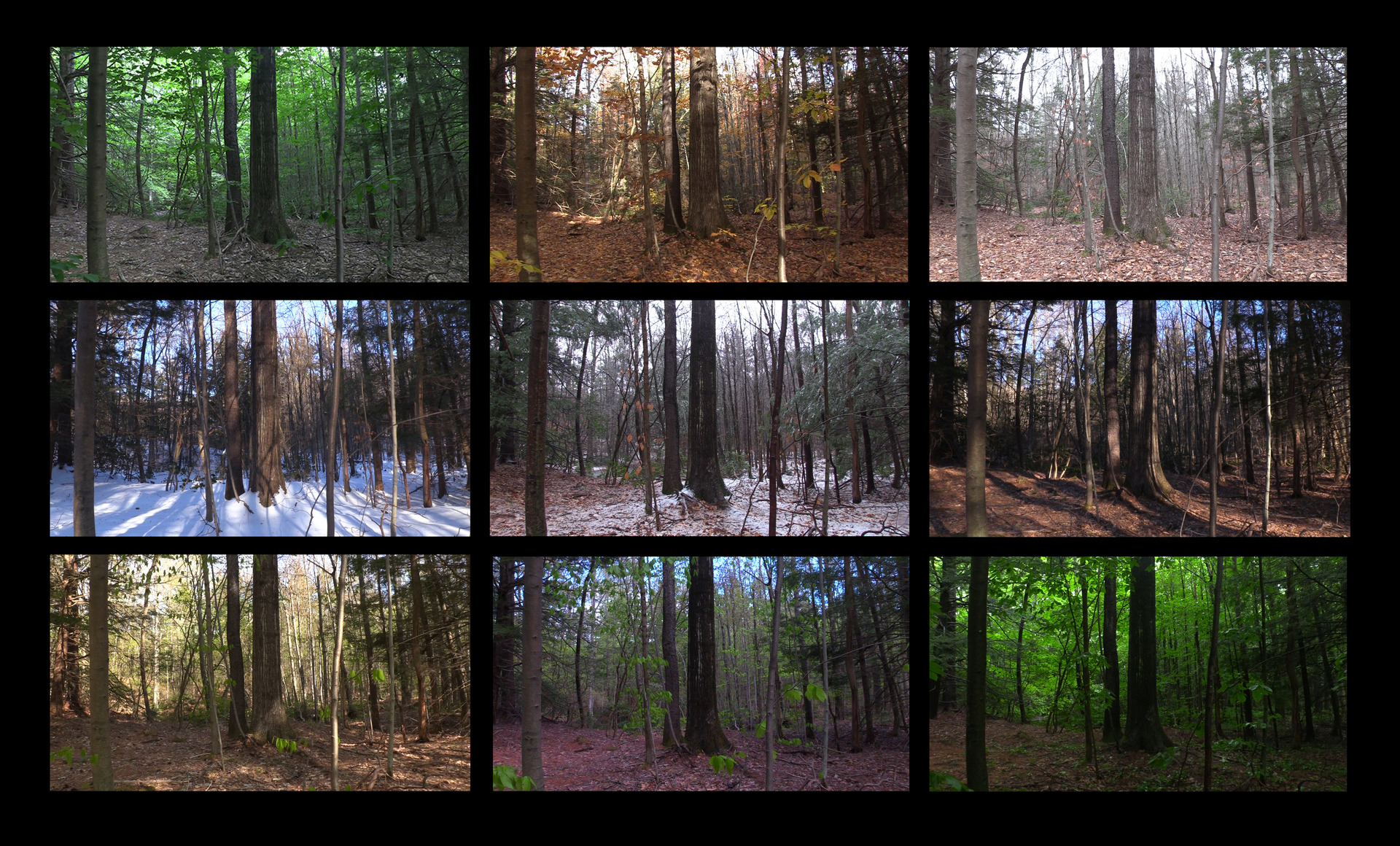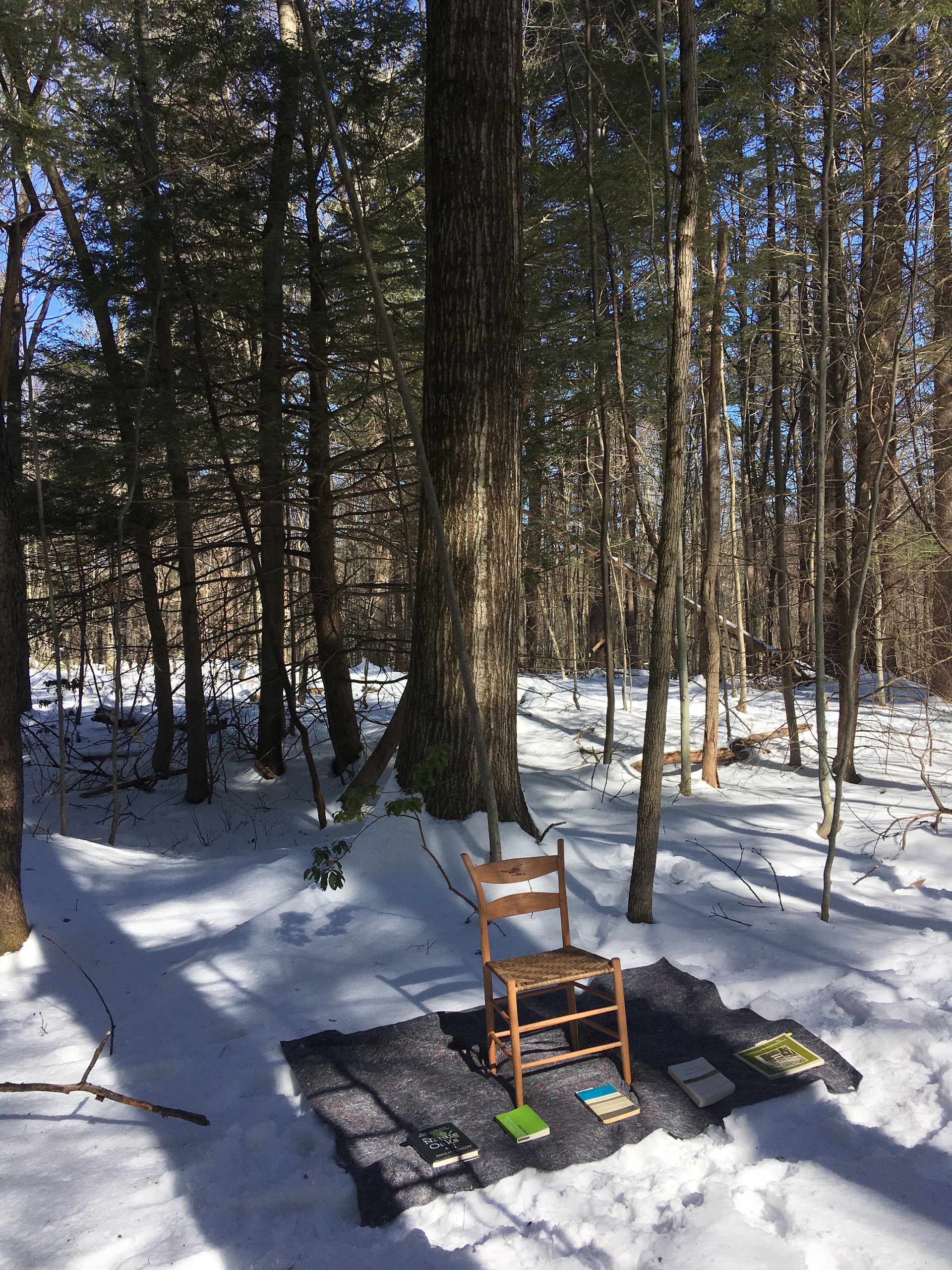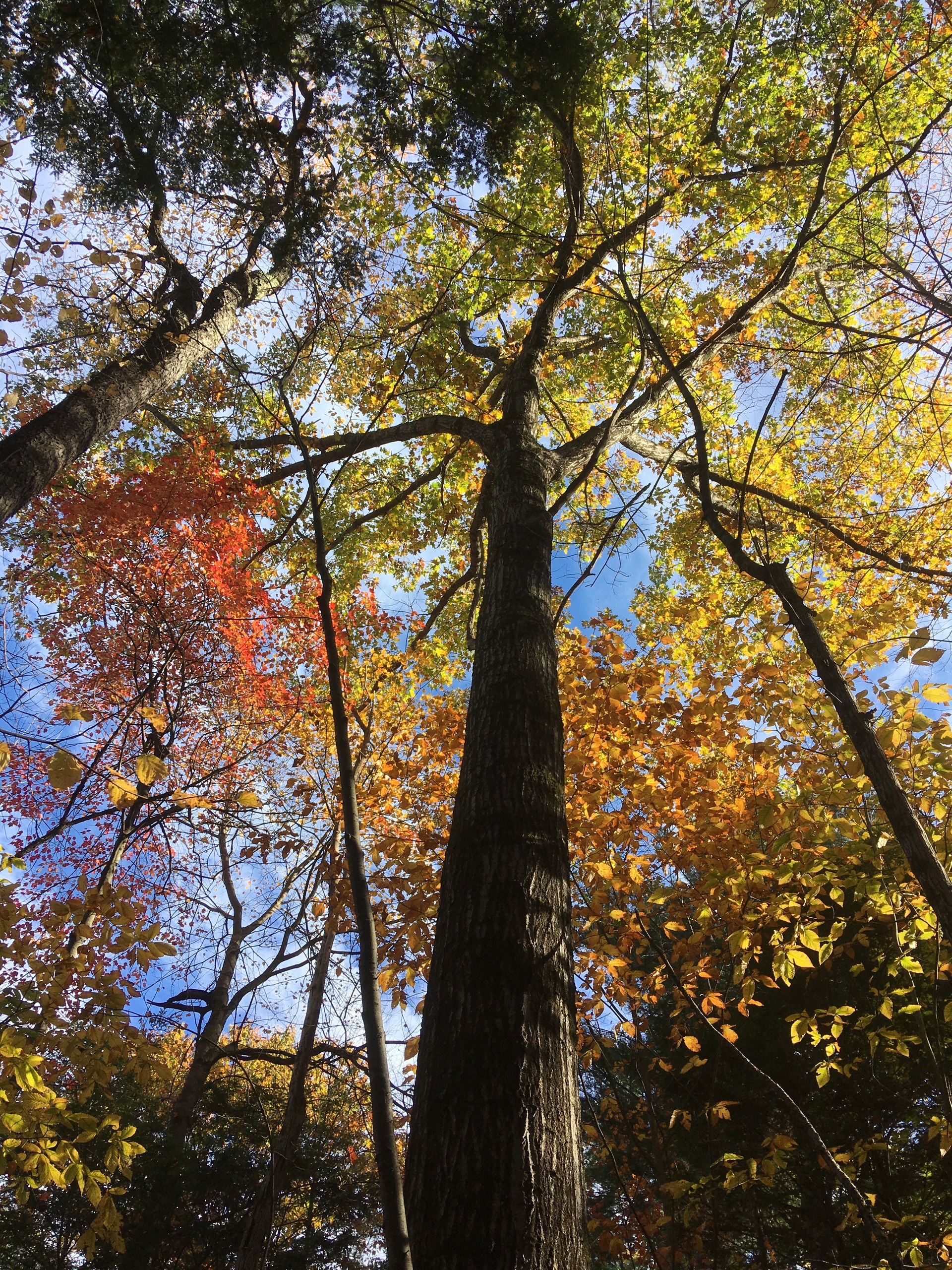Gina Siepel: To Understand a Tree
MARCH 1 – JULY 21, 2024
CURATOR: JENNIFER-NAVVA MILLIKEN
To Understand a Tree is a multi-disciplinary project that focuses on the dignity of a living tree, its network of eco-systemic relationships, and the ubiquity of the material of wood in design and daily life.
The project centers on contemplation of a living forest tree and its immediate habitat from the perspective of an artist whose work draws from social practice, video, performance, and the politics of early-Americana. The project links biological understandings of forest interconnection, environmental philosophy, queer ecology, and Indigenous teachings about human-nature relationships, challenging an often-assumed binary between living tree and dead wood. These studies, along with many hours spent in the forest observing a 100-year-old red oak tree and its surrounding ecosystem, encourage a shift in the consideration of the tree as a subject rather than simply an object, fundamentally affecting ideas of woodworking practice and ecological responsibility. To Understand a Tree functions as a small-scale way of exploring big questions about the place of humans in the environment, the scale and speed at which we consume natural resources, and which organisms are included or excluded in a definition of “community.”
This multidisciplinary exhibition is comprised of an immersive video installation, functional and sculptural greenwood chairs made from trees killed by invasive insects or storms, and site artifacts that emerged through direct engagement with tree and the surrounding ecosystem. It includes many collaborations and public engagements with artists, ecologists, students, and other specialists, including the composer and cellist Vernon David and the naturalist Kate Wellspring, who has been a key participant of To Understand a Tree since the initial observation stages of the project.
To Understand a Tree is an ongoing project conducted by Gina Siepel. It is hosted by the Arts Afield program at the MacLeish Field Station of Smith College, where Siepel is an artist-in-residence.
To Understand a Tree is accompanied by a full-color catalogue, which will include writings, commentary, and images of the exhibition works and installation.
To Understand a Tree is generously supported by the Cambium Circle Members of the Museum for Art in Wood, Bresler Foundation, Pennsylvania Council on the Arts, Philadelphia Cultural Fund, William Penn Foundation, and Windgate Foundation. In-kind support was provided by Boomerang, Inc.
Gina Siepel (she/they) is an interdisciplinary artist, designer, and woodworker. Their artistic practice reflects an engagement with place, history, queer experience, and ecology, and their work integrates conceptual concerns and craftsmanship with a focus on wood as a natural and a cultural material. Gina’s objects, installations, drawings, videos, and other works link aesthetic and materially based modes of artistic production to other forms of inquiry, including collaboration, social engagement, site-based exploration, and research.
Gina’s works have been shown in museums and galleries nationally, including the Colby Museum, the DeCordova Museum, the Museum for Art in Wood, Vox Populi Gallery, the Center for Maine Contemporary Art, and Amherst College. Gina holds a BFA from the School of Art + Design at SUNY Purchase and an MFA from the Maine College of Art, and has taught at Amherst College, Mount Holyoke College, and currently teaches in the Massachusetts College of Art and Design MFA program. Gina is also currently a MacLeish Field Station Artist-in-Residence at Smith College, and a 2023 recipient of a Teaching Artist Cohort Grant from the Center for Craft. She is currently enrolled in the Field Naturalist Certification Program at Mass Audubon, and is a member of the Greenfield Tree Committee, a volunteer urban forestry organization in Greenfield, Massachusetts.
Join Gina Siepel for How to Breath with a Tree, a half-day retreat at the MacLeish Field Station in Whately MA, owned by Smith College on June 30, 2024. Click HERE for more information.







